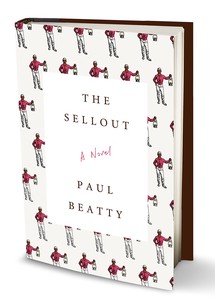Let’s get this out of the way:
The
Sellout is a work of a genius, a satirical opus on race in 21
st-century
America. It takes place mostly in a California ghetto called Dickens, once an
agrarian community whose founding charter set forth that it would be free of
“Chinamen, Spanish of all shades, dialects, and hats. Frenchmen, redheads, city
slicker, and unskilled Jews.” The narrator (surname Me and nicknamed the
Sellout) is an African-American man who was raised by a race-obsessed father
out to unlock the keys to “black liberty." He wasn’t above using his son as a
guinea pig, regularly subjecting him to social experiments, including
administering electric shock if he failed to come up with the right answers to
his random black history quizzes. Me grows up to be a radical-idea-chasing,
N-word-dropping, weed-smoking farmer. After L.A. County literally drops Dickens
off the map to keep up property values in the affluent areas nearby, Me
concocts an outrageous plan to restore it.
Beatty, a
provocateur best known for his novel
The White Boy Shuffle, here explores
racism by taking it to absurd proportions. At one point, Me attends a cabal of black thinkers, among them the creator of a send-up of
The Adventures of Tom Sawyer in which Tom is a "preppy black boy, wearing penny loafers and argyle socks." Its author refers to his work as a "WME, a Weapon of Mass Education," a title that would be as apt for
The Sellout, which inventively challenges the tenets of racial equality, exploding and laying bare our biases and ignorance.


